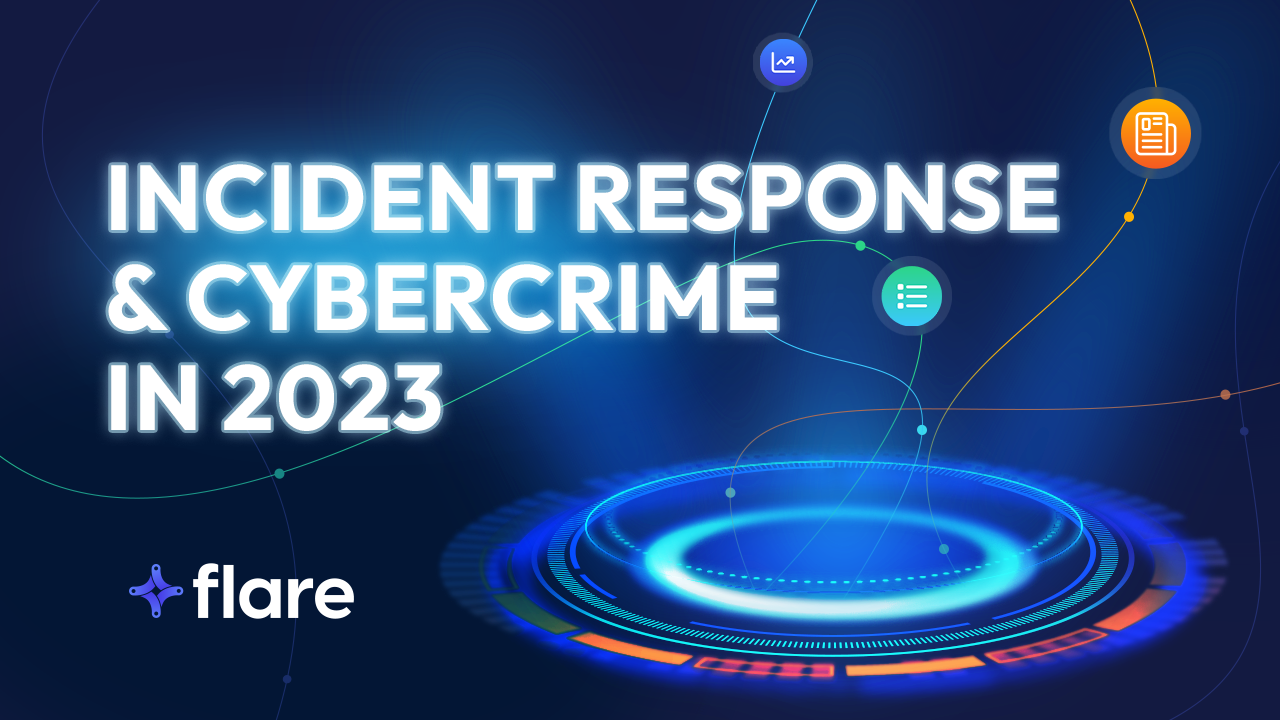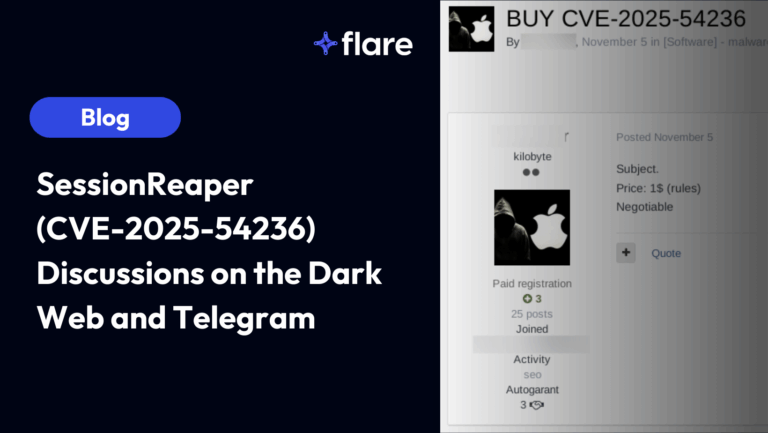
Executive Summary
As the threat environment rapidly changes (and threat actors’ tactics along with it), what should cyber practitioners be on the lookout for?
Former Federal Bureau of Investigation (FBI) Deputy Director Andrew McCabe & former United States Postal Services (USPS) CISO Gregory Crabb spoke with Flare CEO Norman Menz and Director of Marketing Eric Clay about key cybercrime trends in 2023, how companies can build effective incident response programs, and why current cyber defense strategies aren’t cutting it in an increasingly unstable threat environment.
McCabe was an FBI Agent for two decades before becoming Deputy Director of the FBI. Since his time there, he’s been a CNN Intelligence Analyst for national security issues and a Visiting Professor for National Security Law and Policy at George Mason University.
Crabb was a federal law enforcement officer with the United States Postal Inspection Service, which investigates mail fraud, mail theft, and bombs in the mail, then the CISO for USPS.
In addition, Crabb and McCabe run TenEight Cyber, a threat intelligence consulting organization, together.
Check out our full webinar recording, Confidence in Crisis: Incident Response & Cybercrime in 2023, and/or keep reading for the highlights.
Cybercrime Trend: Exploiting Weaknesses with Cryptography
The topic of quantum computing can be flashy, but breakthroughs in quantum computing could render much of modern cryptography pointless. Andy, Greg, and Norman extensively discussed cryptography, and the potential risks of quantum cryptography.
The problem is with both the technology itself and its adoption. These are the steps for organizations to mitigate these risks:
- Gain a comprehensive understanding of the cryptographic technologies they are currently using: Often businesses rely on their CIO shops and technologists to manage and implement cryptography, without fully understanding implementation details. Lack of awareness could be as fundamental a risk as using outdated or insufficient cryptographic measures.
- Pay attention to advances in quantum: Like many futuristic technologies, quantum computing may seem decades away, but reality has a way of being surprising and advances can happen quite suddenly. China and the U.S.spend billions of dollars to advance quantum computing.
AI Attacks for Cyber Analysts to Look Out for
As AI evolves rapidly, so do cybercriminals’ TTPs involving AI. The weaponization of AI presents major challenges. For example, AI contributing to misinformation and disinformation campaigns in the 2016 U.S. election shows the far-reaching impacts of such efforts. Recent advances in AI have compounded the problem significantly. Applications such as GPT-4, Facebook’s LLAMA and a host of open source models risk making the problem substantially worse.
Misinformation and disinformation campaigns powered by AI and machine learning will become an even more common threat in the cyber landscape. Cyber analysts must not only understand but also anticipate the complex and rapidly changing nature of AI-related attacks.
Cybersecurity Lessons from the Public Sector for the Private Sector
Internet access, social media, and changing communication practices have caused significant societal shifts. Addressing cyber threats shouldn’t be confined only to highly technical teams within organizations. Cybersecurity issues extend to all aspects of an organization’s operations, from protecting the organization and its intelligence community partners to addressing both basic and complex cyber activities.
Organizations have to holistically elevate their understanding of the digital landscape to respond effectively, including their approach to safety, security, and service delivery.
While some sectors, like financial services, are already more sophisticated in their approach due to regulatory mandates, there is a pressing need for other sectors to catch up, particularly those involved in the critical infrastructure chain. Recent cyberattacks on a major food supplier and a major pipeline emphasize the real major vulnerabilities in our daily lives.
How Flare Can Help
Flare is on the forefront of cyber threats by monitoring the clear & dark web and illicit Telegram channels. As AI-related risks change and escalate, Flare equips cyber teams with our AI Powered Assistant to provide actionable intelligence and stay ahead of threat actors.
Curious about how Flare can help your organization stay ahead of emerging cybercrime attacks? Request a demo to learn more.





